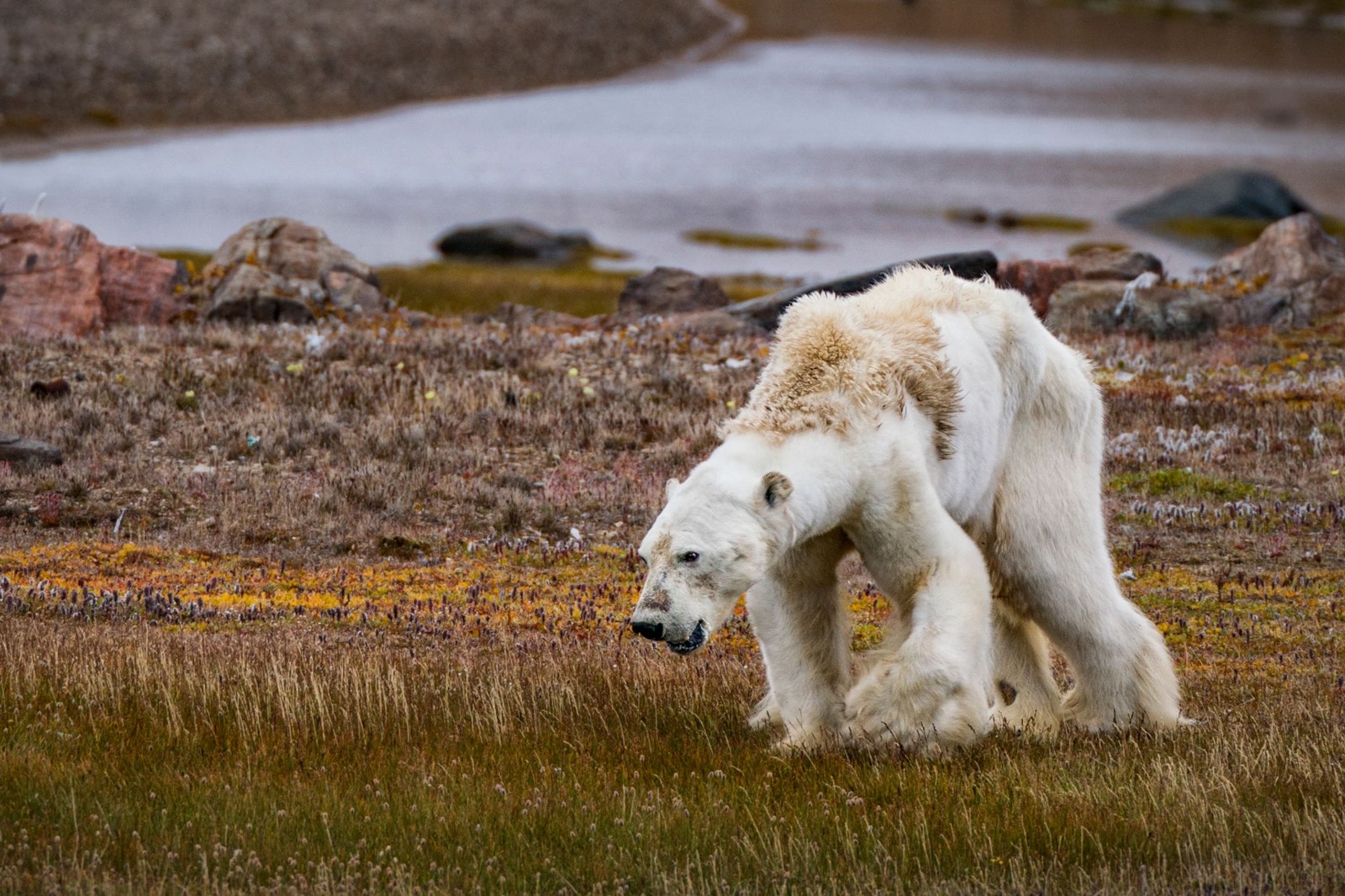
How to foster (temporary) exotic pets legally & ethically.
Fostering exotic pets—ranging from birds, reptiles, and amphibians to small mammals—requires careful planning, legal compliance, and ethical responsibility. This guide explores how to provide temporary care, ensure proper habitat, nutrition, and enrichment, and work with licensed rescue organizations, while prioritizing animal welfare, safety, and conservation, offering a comprehensive approach to responsible and compassionate exotic pet fostering.
🐶 Pet Star
55 min read · 4, Oct 2025

Introduction
The growing fascination with exotic pets—ranging from parrots and sugar gliders to reptiles and exotic fish—has led to an increase in rescue and rehabilitation programs seeking temporary caregivers or foster homes. Fostering exotic animals is not the same as adopting a dog or cat. It demands specialized knowledge, patience, and adherence to strict legal and ethical frameworks. The goal of fostering is to provide a safe, temporary environment for the animal until it can be rehomed or returned to the wild, depending on its origin and health.
This comprehensive article explains how individuals can foster exotic pets legally and ethically, discussing everything from the legal licensing requirements to ethical dilemmas and best practices in animal care.
Understanding Exotic Pet Fostering
1. What Is Exotic Pet Fostering?
Fostering an exotic pet means providing temporary housing and care to animals that cannot immediately return to their natural habitat or find permanent homes. These animals might come from illegal trade seizures, rescue centers, zoos, or surrendered private owners. The fostering period allows for rehabilitation, recovery, or behavioral assessment.
Fostering differs from ownership. You are a caretaker, not a proprietor. The goal is to support the animal’s wellbeing, prepare it for future adoption or release, and comply with all regulations during its stay with you.
Legal Considerations
2. Understand the Legal Framework
Before fostering an exotic pet, the first step is understanding the legal requirements of your country and state. Exotic pets are governed by various laws designed to protect wildlife and ensure public safety.
Key laws and authorities include:
- CITES (Convention on International Trade in Endangered Species of Wild Fauna and Flora): Regulates international trade in endangered animals.
- Wildlife Protection Acts (varies by country): In India, for example, the Wildlife Protection Act of 1972 prohibits possession of native wild animals without permission.
- Local animal control or environmental agencies: They often issue permits or licenses for temporary fostering.
- US examples: The Endangered Species Act and Lacey Act regulate transport and ownership of exotic wildlife.
If fostering within the U.S., check with the U.S. Fish and Wildlife Service (USFWS) or state wildlife departments. In the UK, the Animal Welfare Act 2006 and Dangerous Wild Animals Act 1976 are key.
Fostering exotic animals without proper permits can lead to severe penalties—fines, confiscation of animals, and legal prosecution.
3. Licensing and Documentation
Most foster programs for exotic species require you to obtain a temporary wildlife rehabilitation or holding permit. This may include:
- Proof of adequate housing and experience.
- Health and safety inspections.
- Veterinary partnership documentation.
- Periodic reports on the animal’s condition.
Documentation should always accompany the animal—its medical history, rescue background, and any behavioral notes.
Ethical Aspects of Exotic Pet Fostering
4. Understanding Ethical Responsibility
Ethics go beyond legality. Even if permitted by law, not all exotic pets should be fostered by private individuals due to their complex biological and emotional needs. Ethical fostering ensures that:
- The animal’s welfare and comfort come first.
- The foster caregiver has the proper knowledge, space, and time.
- The animal is not exploited or bred during foster care.
- The goal is recovery, not entertainment.
5. Avoiding the “Petification” Trap
One major ethical issue arises when fosters begin treating the exotic animal as a novelty or domestic pet. Exotic animals—such as reptiles, monkeys, or wild birds—have instincts that cannot be “tamed” in short periods. Over-socialization can hinder rehabilitation or make the animal unfit for re-release.
Instead, maintain professional detachment: provide care, enrichment, and stability without imprinting or encouraging dependency on humans.
Preparing to Foster an Exotic Pet
6. Research the Species Thoroughly
Each species has unique environmental, dietary, and behavioral needs. For example:
- Reptiles need specific temperature gradients, UV lighting, and humidity control.
- Birds require mental stimulation and species-appropriate diets.
- Small mammals like hedgehogs or sugar gliders demand nocturnal activity setups.
Consult experienced handlers, exotic veterinarians, and credible resources before agreeing to foster.
7. Habitat and Safety Setup
Prepare a dedicated area in your home away from pets, children, and loud noises. Habitat requirements depend on the animal’s species but generally include:
- Correct enclosure size and materials.
- Heating and lighting (for reptiles and amphibians).
- Secure locks to prevent escapes.
- Clean water and temperature-regulated environment.
- Non-toxic plants or perches for arboreal species.
Additionally, biosecurity is critical. Use gloves, sanitizers, and separate feeding equipment to avoid disease transmission.
8. Partnering with a Licensed Rescue Organization
Most ethical fosters work through registered rescue or rehabilitation centers. Partnering ensures:
- Legal transfer of custody under permits.
- Veterinary support and emergency protocols.
- Regular health checkups and progress reports.
- Access to species-specific training.
Never accept an exotic animal directly from the public without confirming its legal and medical background.
Caring for the Animal
9. Veterinary Care
Exotic pets often have specialized health needs. Before and during fostering, establish contact with an exotic veterinarian. Regular health assessments, vaccinations (if applicable), and parasite control are mandatory.
Keep a detailed record of feeding schedules, medications, weight, and behavioral notes. This helps the next caregiver or rehabilitation facility continue proper treatment.
10. Diet and Nutrition
Improper feeding is a major cause of illness in exotic animals.
- Herbivores (e.g., iguanas): Require a mix of leafy greens and calcium supplements.
- Carnivores (e.g., snakes): Need pre-killed prey or specialized diets.
- Omnivores (e.g., parrots, sugar gliders): Thrive on fresh fruits, vegetables, and proteins.
Never experiment with food. Follow the vet or rescue center’s guidelines strictly.
11. Enrichment and Behavioral Support
Exotic animals require mental and physical stimulation to prevent stress and self-harming behavior. Offer climbing structures, hiding spots, toys, and interactive feeding devices.
Avoid constant human interaction—short, calm, and predictable routines are best. Stress reduction ensures faster rehabilitation and easier transition to the next phase (release or adoption).
12. Handling and Safety
Handling should be minimal and always for essential care, cleaning, or medical checks. Use gloves, protective gear, or tools like snake hooks depending on the species. Improper handling can result in injuries to both the animal and the foster.
13. Reporting and Progress Monitoring
As a foster, you are responsible for documenting progress. Most rehabilitation organizations require weekly or monthly updates including:
- Weight logs.
- Photos of enclosure setup.
- Behavioral observations.
- Feeding notes and health status.
Transparency builds trust and ensures continuity in care when the animal transitions elsewhere.
End of Fostering Period
14. Transition or Release Process
Once the animal recovers or a permanent home is found, transition must be handled carefully. Prepare the animal by reducing human contact gradually. Provide guidance to the adopting party or wildlife center on feeding and behavioral management.
If the animal is being reintroduced to the wild, wildlife officials and veterinarians oversee the process to ensure minimal human dependency.
15. Emotional Detachment and Reflection
Letting go of a foster animal can be emotionally challenging, especially if you’ve cared for it over several months. However, the success of fostering lies in your ability to detach and celebrate the animal’s recovery or safe transfer.
Reflect on the experience, improve your practices, and consider fostering again only if you can continue meeting all ethical and legal standards.
Common Mistakes to Avoid
- Accepting exotic animals without legal documentation.
- Treating foster animals as permanent pets.
- Improper habitat or diet.
- Lack of quarantine procedures for new animals.
- Overexposure to social media (posting can attract illegal traders).
Ethical fostering is about discretion, responsibility, and respect for wildlife—not popularity.
The Broader Impact of Ethical Fostering
Fostering exotic pets helps rescue centers handle overcrowding, improves animal welfare, and educates the public about conservation. Each successful foster story demonstrates how human compassion, guided by ethics and law, can heal the wounds caused by wildlife trafficking and neglect.
Responsible fostering also discourages the illegal pet trade by promoting regulated, compassionate animal welfare systems.
Fostering exotic pets, such as parrots, reptiles, amphibians, or small mammals, is a remarkable act of compassion that offers a temporary refuge to animals in need, but it comes with unique challenges and responsibilities. Unlike fostering cats or dogs, exotic pet fostering demands a profound understanding of species-specific care, a commitment to legal compliance, and a deep sense of ethical responsibility. Exotic pet fostering refers to providing temporary housing and rehabilitation to non-domesticated animals that may have been rescued from illegal trade, surrendered by owners, or displaced due to habitat loss. The primary goal is not ownership but to nurse the animal back to health or stability before transferring it to a sanctuary, permanent home, or in some cases, back into the wild. Legally, fostering an exotic pet requires navigating complex national and international wildlife protection laws. In many countries, including India, keeping or fostering wild or exotic animals without proper authorization is a criminal offense under laws like the Wildlife Protection Act of 1972. Globally, the Convention on International Trade in Endangered Species of Wild Fauna and Flora (CITES) governs the transport and ownership of endangered animals. In the United States, similar regulations fall under the Lacey Act and Endangered Species Act, while the United Kingdom enforces the Animal Welfare Act 2006 and Dangerous Wild Animals Act 1976. Anyone considering fostering an exotic animal must first obtain the required permits from local or national wildlife authorities, often involving home inspections, veterinary support documentation, and proof of species-specific knowledge. These regulations exist not to discourage fostering but to ensure the safety of both animals and humans. Legally fostering an exotic pet often requires coordination with a certified rehabilitation center or licensed rescue organization that holds custody of the animal, while you provide care under their supervision. Ethically, fostering an exotic pet is not merely about following rules but about upholding the animal’s best interests. Even when laws permit, not all species should be fostered by individuals, as many exotics have complex physical and psychological needs that can only be met by professionals. Ethical fostering demands that the animal’s welfare comes first—it should not be treated as entertainment or novelty. Foster caregivers should resist the temptation to humanize or over-socialize these animals, as that may make them unsuitable for future release. Before taking on a foster role, thorough research into the species’ habitat, diet, behavior, and enrichment needs is essential. For example, reptiles require specific temperature gradients and UV lighting, birds need high-protein diets and social stimulation, while small mammals like sugar gliders or hedgehogs are nocturnal and demand particular environmental setups. Housing should be carefully prepared: enclosures must be secure, escape-proof, and free from toxic materials, while maintaining appropriate temperature and humidity levels. Hygiene and biosecurity are critical—use separate feeding tools, wear gloves, and regularly disinfect enclosures to prevent disease spread. Fostering should always occur in partnership with a registered rescue or rehabilitation organization, as they provide legal protection, expert guidance, and veterinary oversight. Such collaboration ensures access to specialized veterinary care since exotic pets often suffer from stress-induced illnesses, malnutrition, or parasitic infections. Diet and nutrition must strictly follow expert guidelines; improper feeding can be fatal. Herbivorous reptiles need a balanced diet rich in leafy greens and calcium, carnivorous snakes require pre-killed prey, and omnivores like parrots thrive on a combination of fruits, seeds, and proteins. Consistency in feeding schedules, monitoring weight, and maintaining hydration are vital. Mental enrichment is equally important to prevent boredom and stress—provide toys, perches, climbing branches, or interactive feeding puzzles, depending on the species. However, enrichment should never substitute for the animal’s natural instincts. Handling must be limited to medical or maintenance needs, and safety protocols—like protective gloves and tools—are non-negotiable, particularly for venomous or defensive animals. Foster caregivers should maintain detailed daily records, noting eating habits, weight, behavior changes, and medical updates, which help the rehabilitation organization monitor progress. Ethical fosters avoid posting excessive photos or videos online, as social media exposure can attract illegal wildlife traders and misinform the public about keeping exotic pets casually. When the foster period ends, the animal’s transition must be handled delicately. If being rehomed, the fosterer should assist with behavior notes and care instructions to ensure continuity. If the animal is being released into the wild, the release should be managed by licensed professionals to ensure it does not depend on humans for survival. Emotional detachment is another critical part of the process—fosterers often form bonds with animals they nurture for months, but ethical responsibility demands letting go when the time comes. Common mistakes to avoid include accepting animals without documentation, improper enclosures, feeding errors, and overexposure to handling or social media. The broader purpose of exotic pet fostering is not only to help one animal but to contribute to wildlife conservation, rehabilitation, and public education. Each successful foster represents a victory against the cruelty of wildlife trafficking and neglect, creating awareness that animals belong in natural habitats, not as home décor or exotic possessions. Fostering also helps rehabilitation centers manage overcrowding, provides temporary homes during medical recovery, and educates communities about the consequences of illegal wildlife trade. Legal and ethical fostering practices ultimately bridge compassion with conservation. In conclusion, fostering exotic animals responsibly demands a delicate balance between empathy and discipline. It requires adherence to laws, scientific understanding of species-specific needs, and moral integrity to ensure that your actions serve the animal’s welfare and not your personal desires. A responsible fosterer is not an owner but a caretaker—a guardian who offers care without possession, love without exploitation, and compassion guided by conscience and law.
Fostering exotic pets, which can include birds such as parrots, small mammals like sugar gliders, reptiles, amphibians, and even some fish species, is an endeavor that requires not only a compassionate heart but also meticulous attention to legal compliance, ethical responsibilities, and species-specific care, because unlike domestic pets, exotic animals have highly specialized needs that must be met in order to ensure their health, well-being, and proper rehabilitation, making the process of fostering fundamentally different from standard pet ownership and far more regulated, as in most countries the temporary housing of such animals is governed by laws like India’s Wildlife Protection Act of 1972, the US Endangered Species Act and Lacey Act, the UK Animal Welfare Act 2006, and international treaties such as CITES, all of which exist to prevent illegal trade, exploitation, and potential ecological disruption, and anyone considering fostering must obtain the necessary permits or work in coordination with a licensed rescue or rehabilitation center to ensure both legality and safety, since handling, housing, and caring for exotic pets without proper authorization can lead to fines, confiscation of the animals, and even imprisonment, while also putting both humans and animals at risk due to potential disease transmission or aggression, and beyond legality, ethical responsibility plays a critical role in fostering, as the caregiver must prioritize the animal’s physical and psychological welfare, avoiding the common mistake of treating exotic animals as novelty companions, over-socializing them, or allowing them to imprint on humans, since many species are not suited for domestic life and may require minimal human interaction to prepare them for eventual adoption, transfer, or in some cases, release into the wild, and fostering begins with thorough research on the species-specific requirements, including diet, habitat, temperature, humidity, light, and enrichment needs, because reptiles require precise temperature gradients and UV lighting, birds need social stimulation and a varied, high-protein diet, and nocturnal mammals need environments aligned with their natural activity cycles, while all species need secure, escape-proof enclosures made from non-toxic materials to prevent injury and stress, and hygiene and biosecurity are paramount, requiring separate feeding tools, gloves, and regular cleaning of enclosures to prevent disease spread, with proper quarantine measures for new arrivals, and fosterers must maintain accurate records of weight, feeding, behavior, and health observations to support rehabilitation goals, coordinate with veterinarians who specialize in exotic species, and ensure any medications or treatments are administered correctly, because even minor mistakes in diet or care can be life-threatening, and alongside physical health, mental stimulation through environmental enrichment is essential, using climbing structures, hiding places, toys, and interactive feeding strategies to prevent stress and abnormal behaviors, while handling should be minimal and always done with appropriate protective equipment to avoid injury to both humans and animals, and fostering should be conducted under the supervision of a licensed rescue organization, which provides access to expertise, legal protection, emergency protocols, and guidance on transitioning the animal to its next stage, whether that be adoption, placement in a sanctuary, or in certain cases, a controlled release into the wild, and the process of preparing an animal for transfer includes gradually reducing human interaction, monitoring behavioral signs, and providing detailed notes to the receiving caregivers or wildlife authorities to ensure continuity of care, and fosterers must also prepare for the emotional aspect, as forming bonds with the animals is natural, but ethical responsibility requires detachment when it comes time to hand the animal over, emphasizing that the ultimate goal is the animal’s welfare and long-term survival rather than personal attachment or enjoyment, and common pitfalls to avoid include accepting animals without documentation, failing to maintain proper habitat conditions, incorrect feeding, over-handling, and sharing images online, which can inadvertently promote illegal trade, and by adhering to legal, ethical, and practical guidelines, fostering serves a greater purpose, supporting wildlife conservation, reducing the demand for illegally traded animals, and educating the public about the complex needs of exotic species, while simultaneously helping rehabilitation centers manage overcrowding and care for injured, neglected, or displaced animals, and fostering provides temporary protection for animals until they are ready for their permanent environment, acting as a bridge between rescue and long-term placement, while also fostering respect for wildlife, teaching responsibility, and spreading awareness about the importance of preserving natural habitats, and ultimately, a responsible fosterer functions not as an owner but as a caretaker who provides safe, ethical, and temporary care, balancing empathy with discipline, following all legal requirements, consulting with veterinarians and experts, maintaining precise records, ensuring species-appropriate diets and habitats, providing environmental enrichment, minimizing unnecessary human contact, and preparing the animal for its next stage, because only through this combination of legality, ethics, knowledge, and careful attention can exotic pet fostering truly succeed, safeguarding both the animal’s health and future while also upholding conservation principles and demonstrating that human compassion, when exercised responsibly, can play a crucial role in the rehabilitation and protection of exotic species, ensuring that every fostered animal has a chance to thrive while serving as a model for ethical human-animal interactions, thus reinforcing the principle that fostering is not about possession or novelty, but about stewardship, rehabilitation, and respect for the intrinsic needs of each unique species.
Conclusion
Fostering exotic pets can be one of the most fulfilling experiences for animal lovers, but it requires a deep sense of responsibility. The foster caregiver acts as a guardian and healer—balancing emotional attachment with ethical distance. Legal compliance through permits and partnerships ensures both safety and credibility.
A successful exotic pet foster prioritizes:
- Legal documentation and licensing.
- Proper housing, diet, and veterinary care.
- Ethical behavior, preventing commercialization or exploitation.
- Preparedness for emotional separation.
In conclusion, fostering exotic animals is a serious commitment that bridges compassion with conservation. When done correctly, it becomes an act of service—healing not only the animal but contributing to a more ethical coexistence between humans and wildlife.
Q&A Section
Q1: What is the difference between fostering and adopting an exotic pet?
Ans: Fostering is temporary care aimed at rehabilitation or transition, while adoption is permanent ownership. Foster caregivers work under permits and return the animal once it's ready for rehoming or release.
Q2: Do I need a license to foster exotic pets?
Ans: Yes, most regions require special permits for handling and housing exotic species. Always check with wildlife authorities or registered rescue centers before fostering.
Q3: Can exotic pets be released into the wild after fostering?
Ans: Only native species approved by wildlife agencies can be re-released. Non-native or captive-bred animals are usually placed in sanctuaries or permanent care facilities.
Q4: Is fostering exotic pets dangerous?
Ans: Potentially, yes. Exotic animals may carry zoonotic diseases or display unpredictable behavior. Safety training and protective measures are essential for the foster’s and animal’s well-being.
Q5: How can I ensure ethical fostering?
Ans: Partner with licensed organizations, avoid treating the animal as a novelty, provide species-specific care, and follow legal and veterinary guidelines at all times.
Similar Articles
Find more relatable content in similar Articles

How Climate Change Affects Wild and Domestic Animals...
Climate change is dramatically.. Read More

Smart Homes for Pets: Automated Feeders, Doors, and Mo..
As smart home technology advan.. Read More

How Pets Strengthen Family Bonds...
Pets are more than just compan.. Read More

Sustainable Pet Products: What to Look for in 2025...
As sustainability becomes a ce.. Read More
Explore Other Categories
© 2024 Copyrights by rPets. All Rights Reserved.